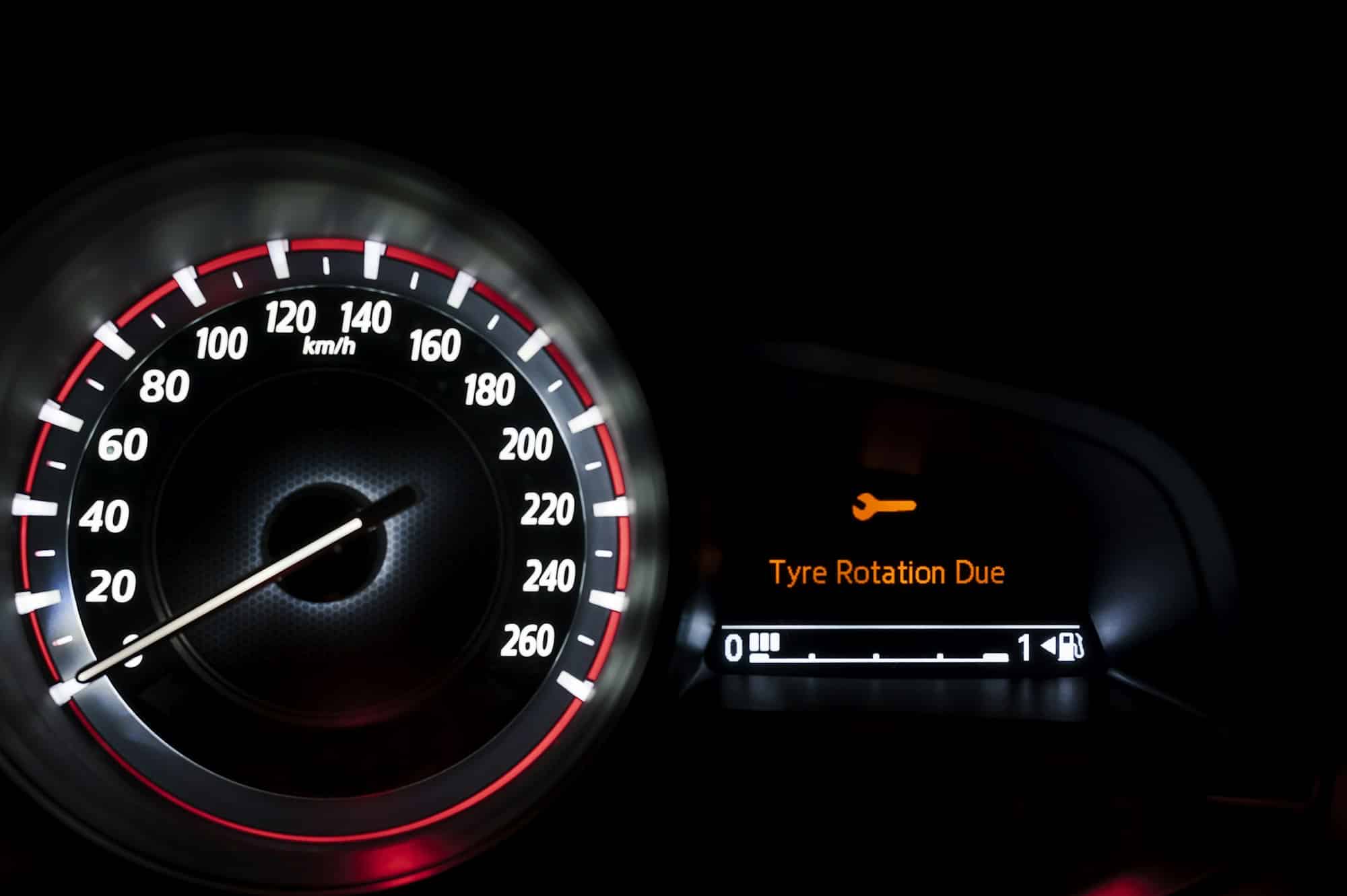For four-wheel drive vehicle owners, ensuring optimal tire performance goes beyond just filling up on gas. Scheduling regular tire rotations is vital for achieving even wear, which enhances safety and improves handling. This guide offers practical insights and effective strategies to help you maintain your tires, ultimately extending their lifespan and keeping you safe on the road. Learn how to establish a rotation schedule tailored to your driving habits and vehicle specifications, empowering you to drive with confidence.
Importance of Tire Rotation for Four-Wheel Drive Vehicles
Tire rotation is a crucial aspect of four-wheel drive maintenance that can significantly impact vehicle safety. Regular tire rotation helps to ensure even wear across all four tires, which is essential for maintaining optimal traction and handling. In four-wheel drive vehicles, this practice becomes even more critical due to their unique wear patterns.
Also read : What is the best practice for checking blind spots in van-sized vehicles?
Four-wheel drive vehicles often experience uneven tire wear because the power is distributed to all four wheels. This can lead to certain tires bearing more load or experiencing more friction, depending on driving conditions and habits. By rotating the tires, you can balance out these wear patterns, extending the life of the tires and ensuring that each tire maintains a similar level of tread.
Uneven tire wear can have serious safety implications. It can lead to reduced grip on the road, especially in adverse weather conditions, increasing the risk of accidents. Moreover, uneven tires can affect the vehicle's alignment and suspension, potentially leading to more costly repairs. Regular tire rotation as part of your four-wheel drive maintenance routine can help prevent these issues, keeping your vehicle safe and reliable on the road.
Also to see : How important is the wheelbase length of a vehicle to its stability and safety?
Recommended Tire Rotation Schedule
Understanding the tire rotation frequency is vital for maintaining your four-wheel drive vehicle. Generally, it is recommended to rotate tires every 5,000 to 7,500 miles. However, specific recommendations for four-wheel drives may vary due to their unique demands and wear patterns.
General Guidelines
- Every 5,000 to 7,500 miles: This range is a common guideline, aligning with many vehicle maintenance schedules.
- Consult your vehicle's manual: Always refer to the manufacturer's recommendations for precise guidance.
Four-Wheel Drive Considerations
For four-wheel drive vehicles, adhering to a regular maintenance schedule is crucial. These vehicles often require more frequent rotations to manage the distribution of power across all wheels effectively. Regular rotations help ensure even tread wear, which is essential for maintaining traction and handling.
Influencing Factors
Several factors can influence the timing of tire rotations:
- Driving habits: Aggressive driving can lead to quicker wear.
- Road conditions: Frequent off-road driving or rough terrains may necessitate more frequent rotations.
- Load distribution: Carrying heavy loads can also impact tire wear patterns.
By understanding these factors and adjusting your tire rotation frequency accordingly, you can enhance the longevity and performance of your four-wheel drive vehicle.
Techniques for Tire Rotation in Four-Wheel Drive Vehicles
Tire rotation methods are essential for maintaining the performance and safety of four-wheel drive vehicles. Understanding the various tire rotation patterns is crucial for ensuring even wear and optimal handling.
Common Tire Rotation Patterns
For four-wheel drive vehicles, the most common patterns include the "X" pattern and the forward cross pattern. The "X" pattern involves swapping the front left tire with the rear right, and the front right with the rear left. The forward cross pattern moves the front tires to the opposite rear positions while the rear tires move straight forward.
Step-by-Step Guide for Rotating Tires
- Gather necessary tools: A jack, lug wrench, and torque wrench are essential.
- Loosen lug nuts: Slightly loosen the lug nuts on all tires.
- Lift the vehicle: Use the jack to lift the vehicle safely.
- Remove tires: Take off the tires and follow the chosen pattern.
- Reattach tires: Secure the tires in their new positions.
- Tighten lug nuts: Use a torque wrench to ensure proper tightness.
Tools and Equipment Needed
- Jack: For lifting the vehicle.
- Lug wrench: To loosen and tighten lug nuts.
- Torque wrench: Ensures correct lug nut tension.
Signs Indicating the Need for Tire Rotation
Understanding the tire wear indicators is essential for maintaining your vehicle's safety and performance. Visual signs such as uneven tread wear, bald spots, or feathering on tires can signal the need for a tire rotation. Checking for these indicators regularly can prevent further wear and potential safety hazards.
Neglecting regular rotations can lead to performance issues. You might notice decreased handling, longer stopping distances, or an increase in road noise. These symptoms can affect overall driving experience and vehicle safety. Ensuring even tire wear helps maintain optimal traction and handling, crucial for four-wheel drive vehicles.
In addition to scheduled rotations, it's wise to perform recommended checks between these intervals. Inspect your tires for any visible signs of wear or damage, and monitor your vehicle's performance. If you notice any unusual vibrations or pulling to one side, it may be time to rotate the tires sooner than planned.
By staying vigilant about these maintenance signs, you can enhance the longevity of your tires and ensure a smoother and safer driving experience. Regular checks and timely rotations are key to keeping your four-wheel drive vehicle in top condition.
Safety Benefits of Regular Tire Rotation
Regular tire rotation is integral to enhancing vehicle safety, ensuring optimal tire performance and driving stability. Properly rotated tires contribute significantly to improved handling by maintaining even tread wear. This uniformity in wear allows each tire to grip the road surface effectively, providing better control during maneuvers and reducing the likelihood of skidding.
A critical aspect of tire performance linked to safety is the relationship between tire wear and braking distance. Unevenly worn tires can lead to increased stopping distances, posing a risk in emergency braking situations. By maintaining even wear through regular rotation, you ensure that all tires provide consistent traction, facilitating quicker and more reliable stopping power.
In adverse weather conditions, such as rain or snow, the importance of regular tire rotation becomes even more pronounced. Tires with uneven wear patterns are less effective at channeling water away, increasing the risk of hydroplaning. Moreover, they can struggle to maintain grip on slippery surfaces, compromising driving stability. Ensuring that your tires wear evenly through consistent rotation helps maintain optimal traction, crucial for safe driving in challenging weather. Prioritising regular tire rotation is a proactive step in safeguarding your vehicle's performance and safety.
Consequences of Neglecting Tire Rotation
Neglecting regular tire rotation can lead to significant tire damage and vehicle issues. Uneven tire wear is a primary consequence, which can manifest as bald spots, cupping, or feathering. These irregularities compromise tire integrity, reducing their lifespan and effectiveness.
The impact of uneven wear extends beyond the tires themselves. It can lead to misalignment, causing the vehicle to pull to one side, and affect suspension components, leading to long-term costs. Repairing these issues often requires more than just replacing tires, as alignment and suspension repairs can be costly.
In addition to immediate repair expenses, neglecting tire rotation can have lasting effects on vehicle performance. Uneven tires decrease fuel efficiency due to increased rolling resistance. They also impair handling and braking, increasing the risk of accidents. Over time, these issues can escalate, leading to more frequent and expensive maintenance needs.
Regular tire rotation is a proactive measure that prevents these problems, maintaining vehicle safety and performance. By ensuring even tire wear, you avoid unnecessary expenses and enhance the overall longevity of your vehicle. Prioritising tire rotation is essential to mitigate the risks associated with neglect.
DIY Tire Rotation Tips
For those keen on DIY maintenance, rotating your tires in your home garage can be a rewarding task. To start, gather the necessary tools: a jack, lug wrench, and torque wrench. Ensure your workspace is on a flat surface, providing stability during the process.
Safety Precautions
Safety is paramount when performing tire rotations. Always use jack stands to support the vehicle, never rely solely on a hydraulic jack. Double-check that the vehicle is secure and will not shift during the procedure. Wearing gloves can protect your hands from dirt and potential injuries.
Effective Tire Rotation Tips
To achieve efficient tire rotation, follow these practical tips:
- Plan your rotation pattern: Choose a pattern suitable for your vehicle, such as the “X” or forward cross pattern.
- Label your tires: Use chalk to mark the original positions of each tire, ensuring you don’t lose track during the rotation.
- Check tire pressure: Once rotated, verify that all tires are inflated to the correct pressure, promoting even wear.
By adhering to these tire rotation tips, you can maintain your vehicle’s performance and extend tire life, all from the comfort of your home garage.
When to Consult a Professional
Understanding when to seek professional services for tire rotation is crucial for maintaining vehicle safety and performance. While DIY tire rotation can be rewarding, certain situations necessitate expert help.
Situations for Professional Help
- Complex tire wear patterns: If you observe unusual wear, such as cupping or feathering, a professional consultation is advised. These patterns may indicate underlying issues like misalignment or suspension problems.
- Advanced vehicle systems: Vehicles with advanced systems, such as all-wheel drive, may require precise rotations that professionals are better equipped to handle.
- Lack of tools or expertise: If you lack the necessary tools or confidence, it's best to rely on expert help.
Benefits of Professional Tire Rotation Services
Professional services ensure correct tire rotation, addressing any additional concerns like alignment or suspension adjustments. Experts can also provide valuable insights into your vehicle's overall condition.
Choosing a Reputable Service Provider
- Research and reviews: Look for providers with positive customer feedback.
- Certifications and experience: Ensure the service provider has certified technicians with experience in handling your vehicle type.
- Transparent pricing: Opt for services that offer clear, upfront pricing without hidden fees.
















